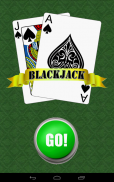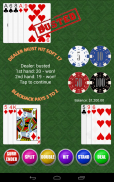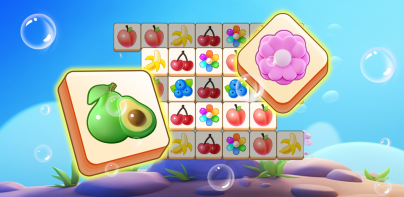







Blackjack

Descrição do Blackjack
Blackjack, also known as twenty-one, is the most widely played casino banking game in the world. Blackjack is a comparing card game between a player and dealer, meaning that players compete against the dealer but not against any other players. The object of the game is to reach 21 points or to reach a score higher than the dealer without exceeding 21.
The dealer has to take hits until his cards total 17 or more points. Players who do not bust and have a total higher than the dealer, win. The dealer will lose if he or she busts, or has a lesser hand than the player who has not busted. If the player and dealer have the same point total, this is called a "push" and the player typically does not win or lose money on that hand.
The first written reference is found in a book by the Spanish author Miguel de Cervantes, who is most famous for writing Don Quixote. Cervantes was a gambler, and the main characters of his tale Rinconete y Cortadillo, from Novelas Ejemplares, are a couple of cheats working in Seville. They are proficient at cheating at ventiuna (Spanish for twenty-one), and state that the object of the game is to reach 21 points without going over and that the ace values 1 or 11. The game is played with the Spanish baraja deck, which lacks eights, nines and tens. This short story was written between 1601 and 1602, implying that ventiuna was played in Castilla since the beginning of the 17th century or earlier. Later references to this game are found in France and Spain.
When twenty-one was introduced in the United States, gambling houses offered bonus payouts to stimulate players' interest. One such bonus was a ten to one payout if the player's hand consisted of the ace of spades and a black jack (either the jack of clubs or the jack of spades). This hand was called a "blackjack" and the name stuck to the game, even though the ten to one bonus was soon withdrawn. In the modern game, a blackjack refers to any hand of an ace plus a ten or face card, regardless of suits or colours.
Many rule variations of blackjack exist. Following are the rules used in this game:
- Split: This game allows a player to split on all 10-point cards. They don't have to match on the face rank. (e.g. J and Q can be split)
- Blackjack payout: 3 to 2.
- Surrender: you only lose half of your bet.
- Split, Double, or Surrender can only be performed right after a player gets his/her an initial two card hand
- If split, a hand of Blackjack is counted as 21 points.
Enjoy! Good luck!
</div> <div jsname="WJz9Hc" style="display:none">Blackjack, também conhecido como vinte e um anos, é o jogo de casino bancário mais difundido no mundo. Blackjack é um jogo de cartas comparação entre um jogador eo dealer, o que significa que os jogadores competem contra o comerciante, mas não contra os outros jogadores. O objetivo do jogo é chegar a 21 pontos até chegar a uma pontuação maior do que o dealer, sem ultrapassar 21.
O concessionário tem de tomar hits até que suas cartas somam 17 ou mais pontos. Os jogadores que não rebentam e temos um total maior do que o revendedor, ganhar. O traficante vai perder se ele ou ela rebenta, ou tem a mão menor do que o jogador que não foi preso. Se o jogador eo dealer têm o mesmo total de pontos, isso é chamado de "push" e que o jogador normalmente não ganhar ou perder dinheiro com essa mão.
A primeira referência escrita é encontrada em um livro do escritor espanhol Miguel de Cervantes, que é mais famoso por ter escrito Don Quixote. Cervantes era um jogador, e os personagens principais de seu conto Rinconete y Cortadillo, a partir de Novelas ejemplares, são um casal de fraudes de trabalho em Sevilha. Eles são proficientes em trapacear no ventiuna (espanhol para vinte e um), e afirmam que o objetivo do jogo é chegar a 21 pontos sem ultrapassar e que os valores da ace 1 ou 11. O jogo é jogado com o deck baraja espanhol, que carece de oitos, noves e dez. Este conto foi escrito entre 1601 e 1602, o que implica que ventiuna foi jogado em Castilla desde o início do século 17 ou anterior. Referências posteriores a este jogo são encontrados na França e na Espanha.
Quando vinte e um foi introduzido nos Estados Unidos, as casas de apostas oferecidas pagamentos de bônus para estimular o interesse dos jogadores. Um desses bônus foi um 10-1 payout se a mão do jogador consistiu no ás de espadas e um jack preto (ou o valete de paus ou o valete de espadas). Esta mão foi chamado de "blackjack" eo nome pegou para o jogo, embora a 12:50 bônus foi logo retirado. No futebol moderno, um blackjack refere-se a qualquer mão de um ace mais um cartão de dez ou face, independentemente de fatos ou cores.
Existem muitas variações de regras de blackjack. A seguir estão as regras usadas neste jogo:
- Split: Este jogo permite a um jogador para dividir em todos os cartões de 10 pontos. Eles não tem que coincidir com a classificação face. (Por exemplo, J e Q pode ser dividida)
- Blackjack pagamento: 3 a 2.
- Rendição: você só perde metade da sua aposta.
- Split, Double, ou a entrega só pode ser realizada logo após o jogador ganha his / her uma mão inicial de dois cartão
- Se dividido, uma mão de Blackjack é contado como 21 pontos.
Divirta-se! Boa sorte!</div> <div class="show-more-end">



























